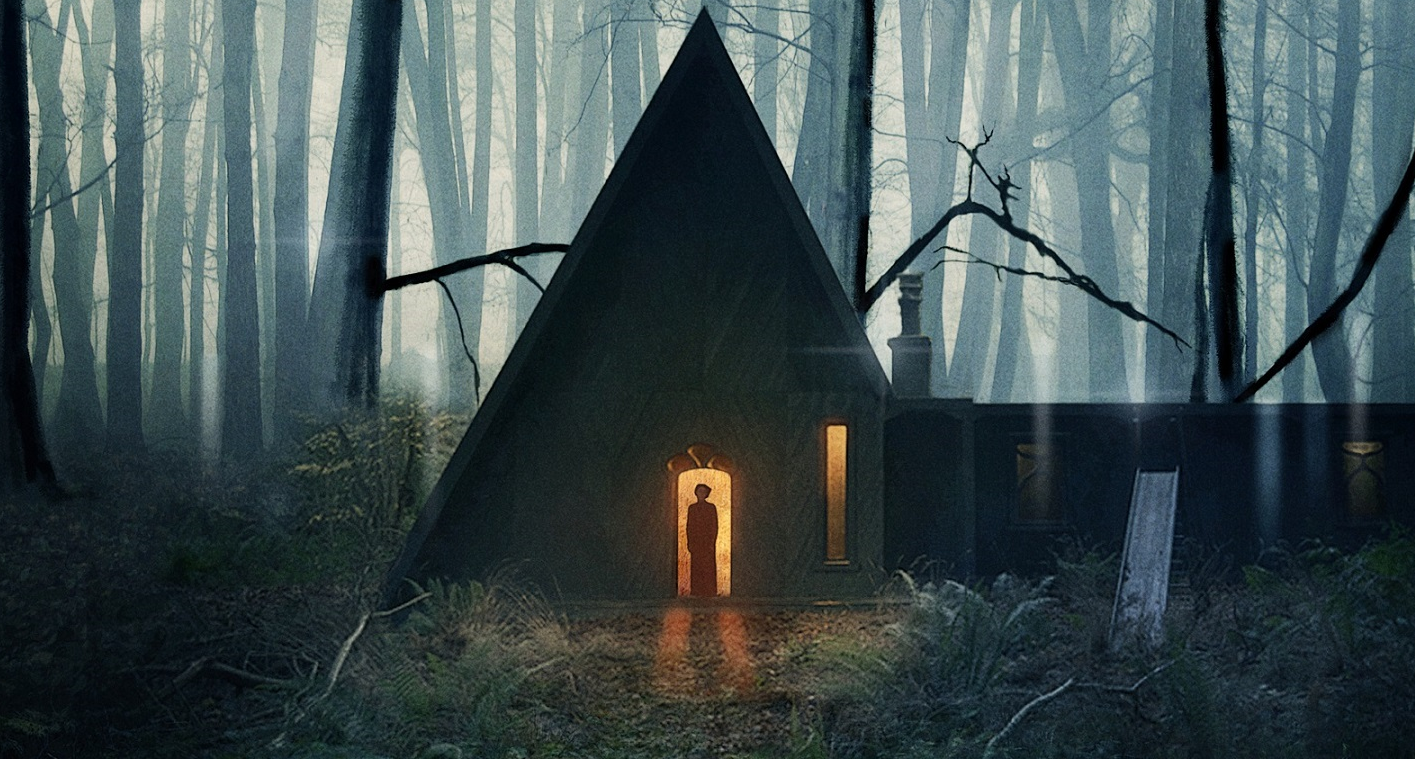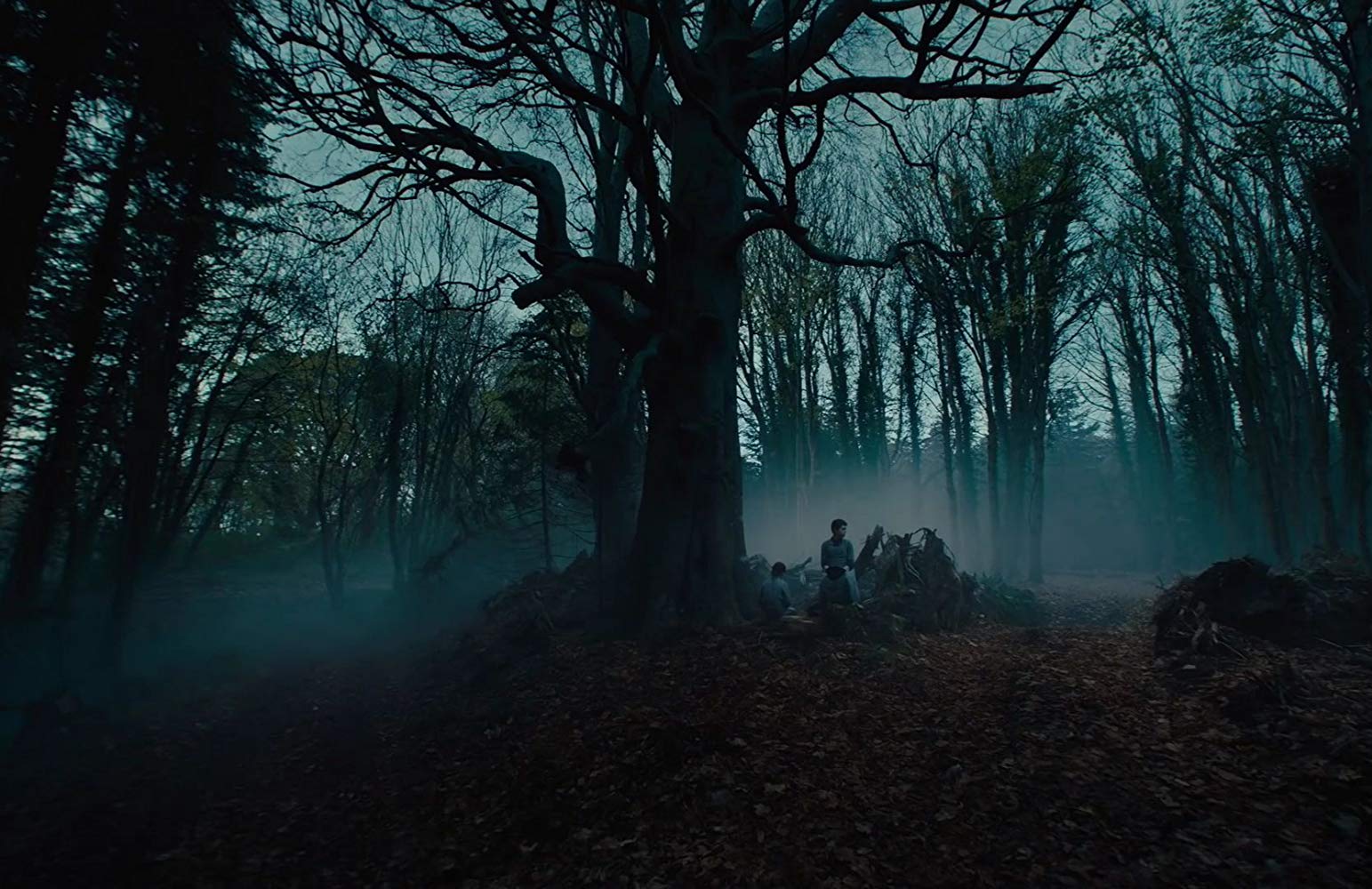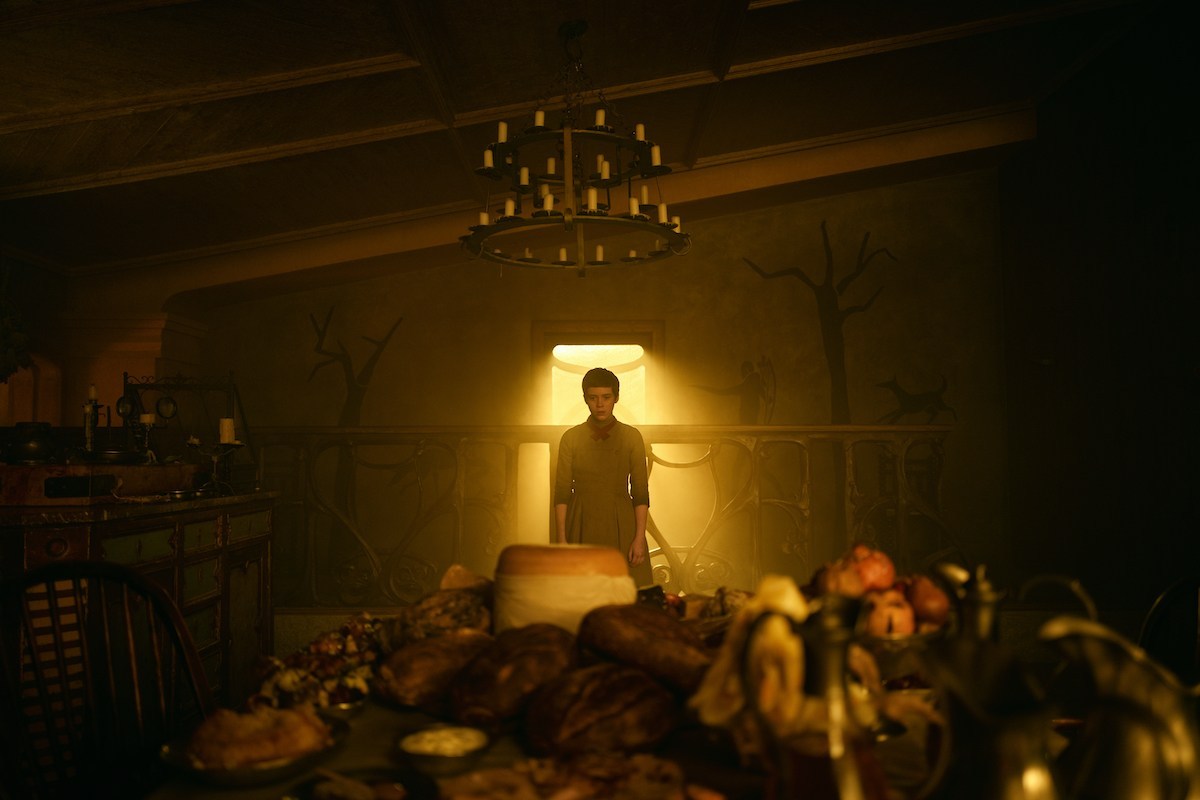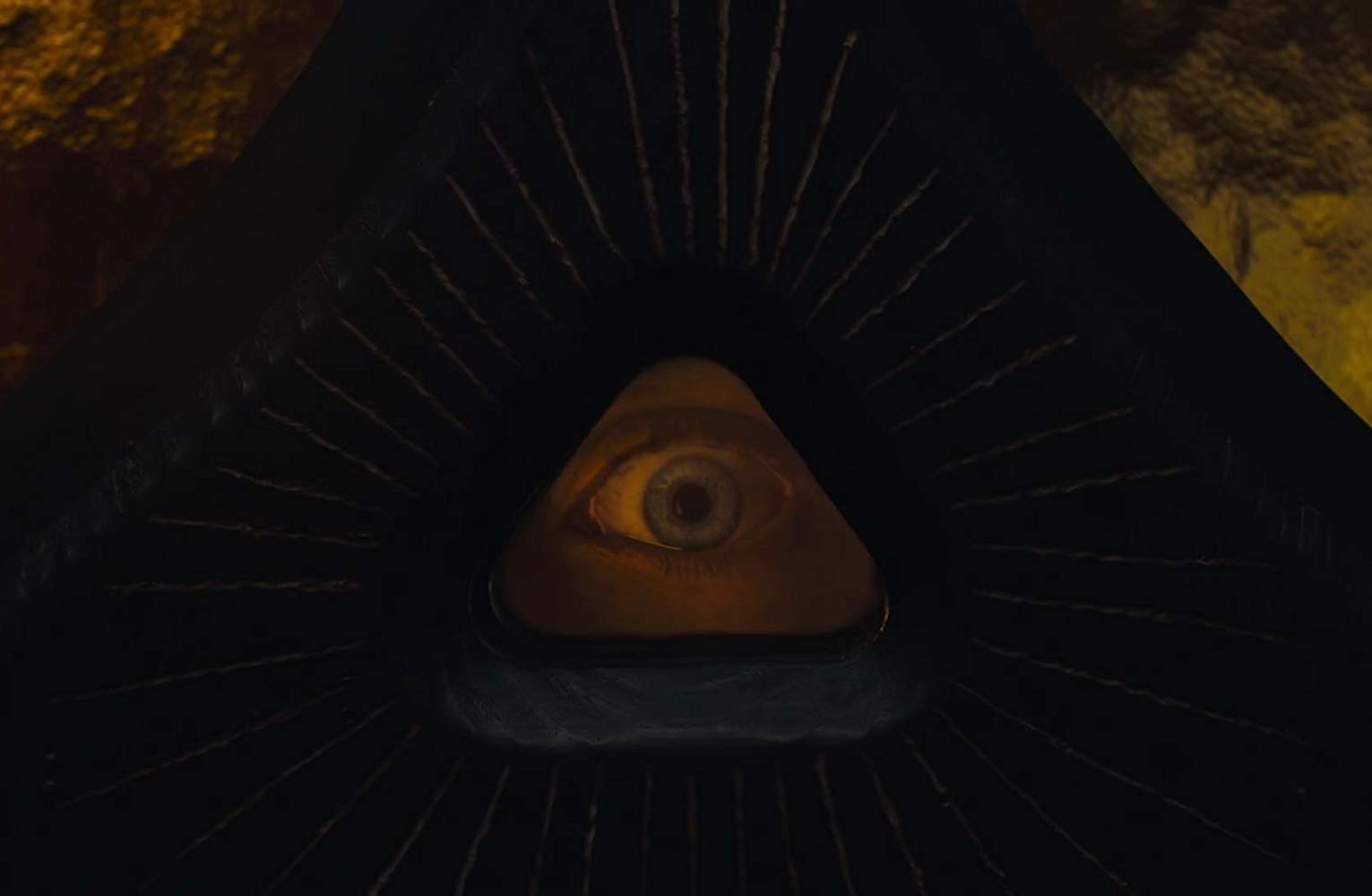b
Gretel & Hansel: A Modern Grimm Tale

Gretel & Hansel is a bit of a film after my own heart. Osgood (Oz) Perkins has done a wonderful job of crafting a horror movie which is subtle yet still intense. It is splendid to look at in its minute details. Down to the beautiful fanned windows in all the dwellings, even the crude bowls and spoons on the table where Gretel sits with her mother for a few moments at the start… The lighting is exquisite, and the forest scenes are so gorgeously shot, stark but lovely.
This new interpretation of the Grimms’ story takes place in a surreal land that falls somewhere between realism and a stylized fantasy. It is not bound within its traditional historical setting; rather, it is a fluid amalgamation of its fairytale epoch fused with modern aesthetics. There is the striking, minimalist triangle which appears as part of the movie’s occult symbolism, and the exterior shape of the witch’s house is utterly modern, not at all reminiscent of a medieval dwelling, or like the gingerbread house of our childhood fancies.

Atmospheric, ominous, moody, yet elegant, Gretel & Hansel is something like a Margaret Atwood or Angela Carter fairy tale in cinematic form, but more taut and minimal. Early on, the film quotes the song from “The Juniper Tree,” perhaps the most violent fairy tale of all time, which begins, “My mother she killed me, my father he ate me…” This gives a foretaste of the dark direction of the film, whose more macabre moments still remain subdued and which always retains an understated but eerily beautiful quality.

